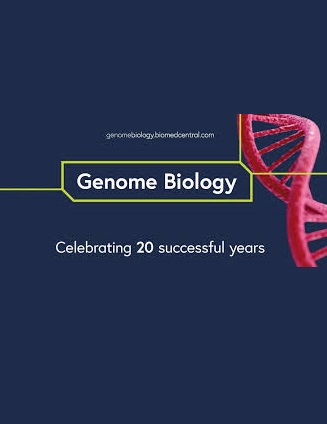Evaluation of somatic copy number variation detection by NGS technologies and bioinformatics tools on a hyper-diploid cancer genome
IF 10.1
1区 生物学
Q1 BIOTECHNOLOGY & APPLIED MICROBIOLOGY
引用次数: 0
Abstract
Copy number variation (CNV) is a key genetic characteristic for cancer diagnostics and can be used as a biomarker for the selection of therapeutic treatments. Using data sets established in our previous study, we benchmark the performance of cancer CNV calling by six most recent and commonly used software tools on their detection accuracy, sensitivity, and reproducibility. In comparison to other orthogonal methods, such as microarray and Bionano, we also explore the consistency of CNV calling across different technologies on a challenging genome. While consistent results are observed for copy gain, loss, and loss of heterozygosity (LOH) calls across sequencing centers, CNV callers, and different technologies, variation of CNV calls are mostly affected by the determination of genome ploidy. Using consensus results from six CNV callers and confirmation from three orthogonal methods, we establish a high confident CNV call set for the reference cancer cell line (HCC1395). NGS technologies and current bioinformatics tools can offer reliable results for detection of copy gain, loss, and LOH. However, when working with a hyper-diploid genome, some software tools can call excessive copy gain or loss due to inaccurate assessment of genome ploidy. With performance matrices on various experimental conditions, this study raises awareness within the cancer research community for the selection of sequencing platforms, sample preparation, sequencing coverage, and the choice of CNV detection tools.评估利用 NGS 技术和生物信息学工具对超二倍体癌症基因组进行体细胞拷贝数变异检测的效果
拷贝数变异(CNV)是癌症诊断的关键基因特征,可用作选择治疗方法的生物标记物。我们利用之前研究中建立的数据集,对六种最新的常用软件工具在检测准确性、灵敏度和可重复性方面的癌症 CNV 调用性能进行了基准测试。与其他正交方法(如微阵列和 Bionano)相比,我们还探讨了不同技术在具有挑战性的基因组上 CNV 调用的一致性。虽然不同测序中心、CNV 调用者和不同技术的拷贝增益、丢失和杂合性丢失(LOH)调用结果一致,但 CNV 调用的差异主要受基因组倍性测定的影响。利用六种 CNV 调用器的共识结果和三种正交方法的确认结果,我们为参考癌细胞系(HCC1395)建立了高置信度的 CNV 调用集。NGS 技术和当前的生物信息学工具可以为检测拷贝增益、丢失和 LOH 提供可靠的结果。然而,在处理超二倍体基因组时,一些软件工具会因基因组倍性评估不准确而调用过多的拷贝增益或丢失。本研究通过各种实验条件下的性能矩阵,提高了癌症研究界对测序平台选择、样本制备、测序覆盖率和 CNV 检测工具选择的认识。
本文章由计算机程序翻译,如有差异,请以英文原文为准。
求助全文
约1分钟内获得全文
求助全文
来源期刊

Genome Biology
Biochemistry, Genetics and Molecular Biology-Genetics
CiteScore
21.00
自引率
3.30%
发文量
241
审稿时长
2 months
期刊介绍:
Genome Biology stands as a premier platform for exceptional research across all domains of biology and biomedicine, explored through a genomic and post-genomic lens.
With an impressive impact factor of 12.3 (2022),* the journal secures its position as the 3rd-ranked research journal in the Genetics and Heredity category and the 2nd-ranked research journal in the Biotechnology and Applied Microbiology category by Thomson Reuters. Notably, Genome Biology holds the distinction of being the highest-ranked open-access journal in this category.
Our dedicated team of highly trained in-house Editors collaborates closely with our esteemed Editorial Board of international experts, ensuring the journal remains on the forefront of scientific advances and community standards. Regular engagement with researchers at conferences and institute visits underscores our commitment to staying abreast of the latest developments in the field.
 求助内容:
求助内容: 应助结果提醒方式:
应助结果提醒方式:


